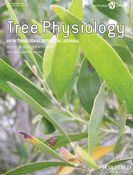Gaines et al., 2016
Reliance on shallow soil water in a mixed-hardwood forest in central Pennsylvania
Gaines KP, JW Stanley, FC Meinzer, KA McCulloh, DR Woodruff, W Chen, TS Adams, H Lin and DM Eissenstat (2016)
Tree Physiology, 36 (4): 444-458
-
Shale Hills, GRAD STUDENT
-
Shale Hills, GRAD STUDENT
-
Shale Hills, INVESTIGATOR, COLLABORATOR
-
IML, Shale Hills, INVESTIGATOR
-
Shale Hills, INVESTIGATOR
Abstract
We investigated depth of water uptake of trees on shale-derived soils in order to assess the importance of roots over a meter deep as a driver of water use in a central Pennsylvania catchment. This information is not only needed to improve basic understanding of water use in these forests but also to improve descriptions of root function at depth in hydrologic process models. The study took place at the Susquehanna Shale Hills Critical Zone Observatory in central Pennsylvania. We asked two main questions: (i) Do trees in a mixed-hardwood, humid temperate forest in a central Pennsylvania catchment rely on deep roots for water during dry portions of the growing season? (ii) What is the role of tree genus, size, soil depth and hillslope position on the depth of water extraction by trees? Based on multiple lines of evidence, including stable isotope natural abundance, sap flux and soil moisture depletion patterns with depth, the majority of water uptake during the dry part of the growing season occurred, on average, at less than ∼60 cm soil depth throughout the catchment. While there were some trends in depth of water uptake related to genus, tree size and soil depth, water uptake was more uniformly shallow than we expected. Our results suggest that these types of forests may rely considerably on water sources that are quite shallow, even in the drier parts of the growing season.
Citation
Gaines KP, JW Stanley, FC Meinzer, KA McCulloh, DR Woodruff, W Chen, TS Adams, H Lin and DM Eissenstat (2016): Reliance on shallow soil water in a mixed-hardwood forest in central Pennsylvania. Tree Physiology, 36 (4): 444-458. DOI: 10.1093/treephys/tpv113
 This Paper/Book acknowledges NSF CZO grant support.
This Paper/Book acknowledges NSF CZO grant support.
Explore Further






